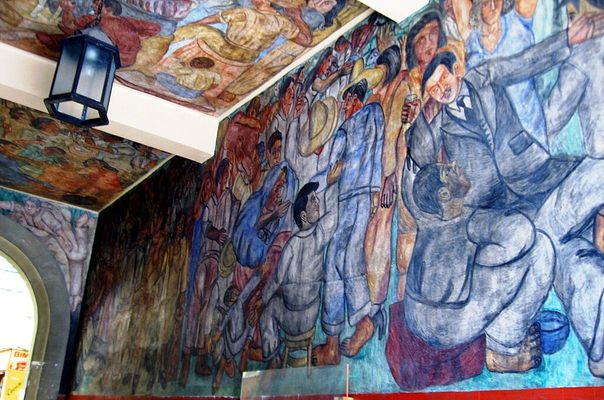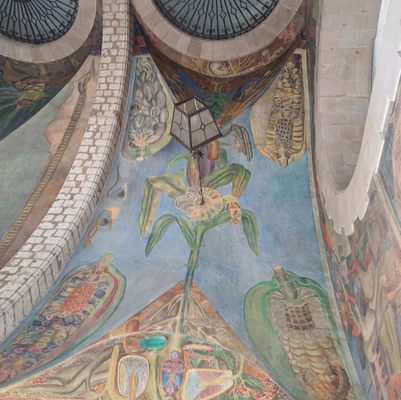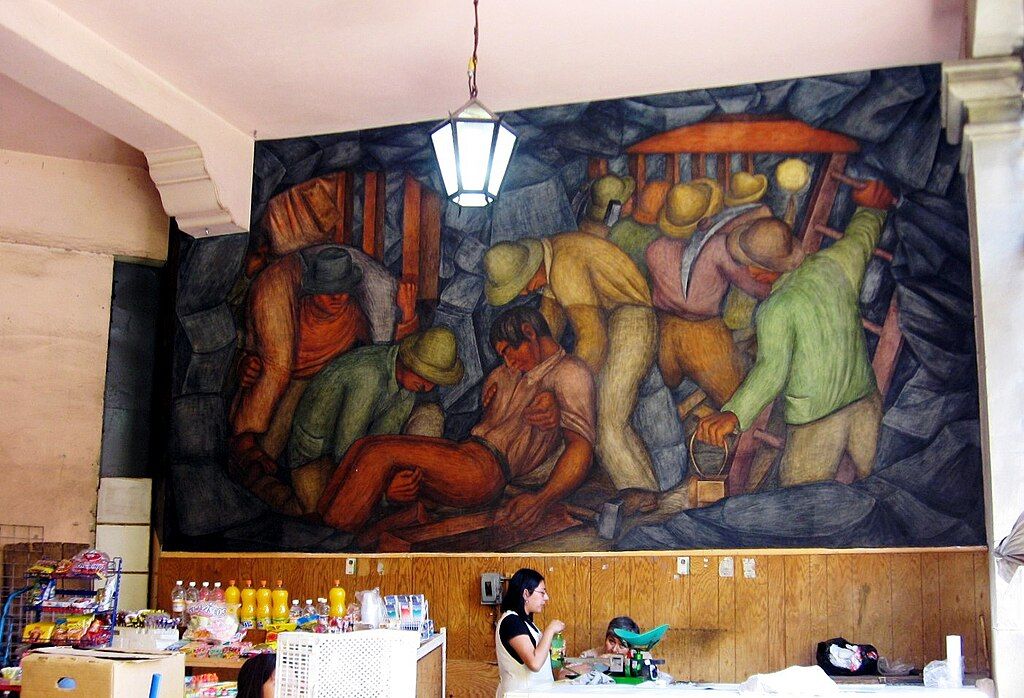About
Built in 1934 and named after the man who was president of the country at the time, the Abelardo L. Rodríguez Market was intended to represent a new ideal for a city market. It was designed by architect Antonio Muñoz, and features details of several architectural styles that were in vogue at the time, from Art Deco to Art Nouveau and Baroque. The market would become the city's largest, part of the avant-garde ideals it strived for.
Its stalls offered a wider variety of products than other markets, but most importantly, it included additional services within. A library, daycare, and even theater were incorporated into the building, for the benefit of not only the neighbors and shoppers but also the sellers and workers. This idea of catering to the working class that staffed the market was one of the impulses behind the murals that would decorate it.
Muralism and socialist principles together meant that Diego Rivera would be the first choice to design the market's artworks. However, his busy schedule meant he only took the role as an advisor and overseer to many of his students, who would end up being the artists who decorated the walls with large depictions of farmers, fruit-pickers, and even miners, intended to highlight the origin of the produce and items for sale.
The team of artists included students born in Mexico: Miguel Tzab, Pedro Rendón, Antonio Pujol, Roberto Mondragón, Raúl Gamboa Cantón, Ángel Bracho and Ramón Alva Guadarrama; along with those born abroad like the sisters Marion and Grace Greenwood, Isamu Noguchi and Pablo O'Higgins. Their paintings cover the walls and ceilings of the vaulted arches that support the market's corners. Given the cutting-edge nature of the market and the popularity of its art style at the time, the building came to be greatly appreciated.
Rodríguez's presidency did not come about via popular election, but he was rather elected as a substitute by the Congress after President Pascual Ortiz Rubio resigned. Despite only being chosen in a substitute capacity, Rodríguez held the position for over two years, until November of the year when the market with his name opened. During this brief period, he oversaw a number of significant developments for the country, from the founding of Pemex (Petróleos Mexicanos, the Mexican state's oil company), to changing the length of the presidency from four to six years, and the opening of the iconic Palacio de Bellas Artes (Fine Arts Palace).
Now approaching a century, the market has had a history of constant ups and downs. Earthquakes have damaged the muraled walls, some had extensive restorations while others remain neglected as of mid-2024. A couple are even hidden for the time being, having been covered up with white paint by Mexico's cultural heritage departments, supposedly to use this paint layer as protection.
Related Tags
Know Before You Go
Open daily from 7 a.m. to 6 p.m., except Tuesdays when it closes at 7 p.m.. This is a working market, so it might not be easy to find all the murals or spend long looking at them but it is still a worthy visit.
Community Contributors
Added By
Published
August 29, 2024
Sources
- https://www.moma.org/collection/terms/mexican-muralism
- https://www.excelsior.com.mx/opinion/humberto-musacchio/es-deprimente-visitar-el-mercado-abelardo-l-rodriguez-pasan-los-anos-y
- https://lasillarota.com/metropoli/2022/1/25/mercados-de-la-cdmx-sobrevivientes-al-paso-del-tiempo-al-abandono-360939.html
- https://www.chilango.com/noticias/murales-mercado-abelardo-rodriguez-cdmx-como-llegar/
- https://www.revistas.unam.mx/index.php/cronicas/article/download/17196/16364
- https://www.inah.gob.mx/foto-del-dia/murales-del-mercado-abelardo-rodriguez
- https://www.gob.mx/epn/es/articulos/natalicio-de-abelardo-l-rodriguez
- https://mexicocity.cdmx.gob.mx/venues/mercado-abelardo-rodriguez/





































